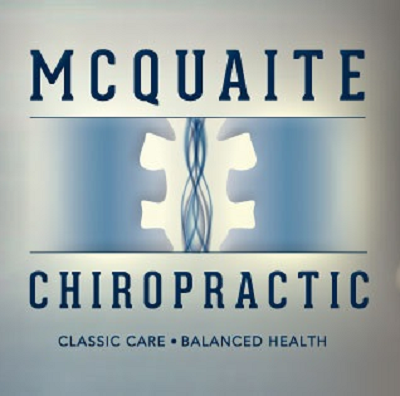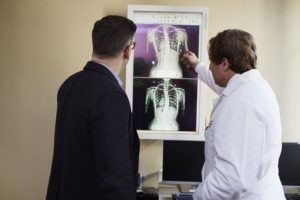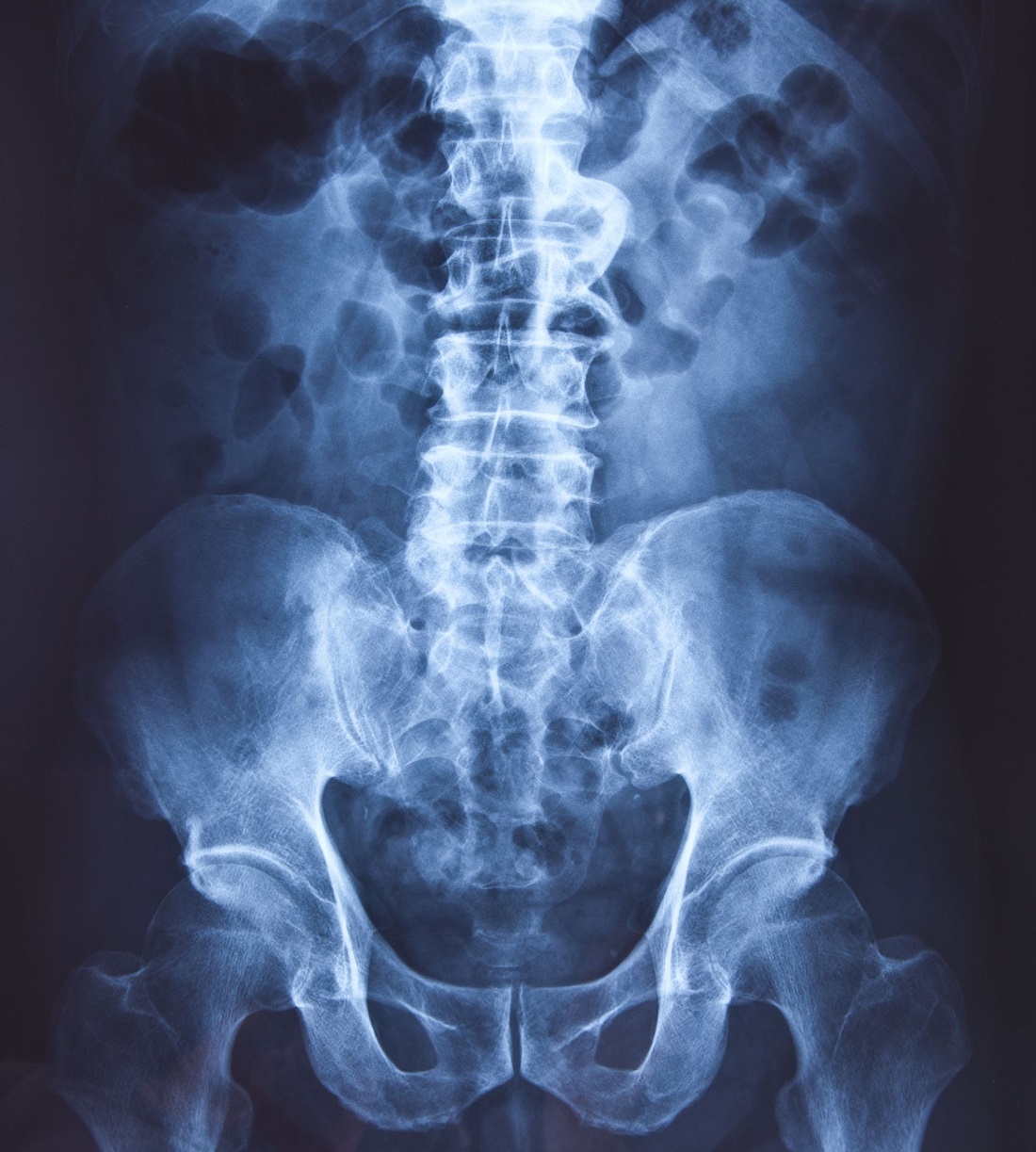
Jan 15, 2020 | Uncategorized

It’s easy to take our bodies for granted. You can walk, bend over, sit and stand, and maybe even run and dance. But one wrong step can change everything. Twist your ankle stepping off a curb and you may find yourself traveling through the airport in a wheelchair because you can’t walk.
As you get older, many people find they have more aches and pains than before. Often, it’s joint related and if left unchecked, can seriously hamper your activities.
There are a few ways you can maintain your joint health though, no matter your age.
How to Protect Your Joint Health
1- Maintain a healthy weight – There are so many health benefits to maintaining a healthy weight and joint health is a big one. Take your knees for instance. Every extra 10 pounds on your body is like another 20 pounds on your knee joints. That takes it’s toll after a while.
2- Stretch – According to researchers at Harvard University, it helps to move and stretch every 15 minutes. That helps keep the oxygen flowing through your body which carries nutrients and helps lubricate the joints. Stretching regularly also improves range of motion.
If you can incorporate a regular yoga class appropriate for your abilities, that’s also beneficial.
3- Create an ergonomic workstation – If you’re like most of us, you spend more time in front of screens that away from them. Not only is sitting for long periods unhealthy, but bending over a screen causes pain in the upper back, shoulders, and neck. Then there’s carpal tunnel pain a lot of people develop due to a lot of typing.
If you keep your screen at eye-level, that will help. If you have a laptop, you can raise it on a special laptop stand or even a stack of books and use an external mouse and keyboard. If you’re using a separate monitor, it’s easy to raise that on a shelf or books.
4- Get a massage – Therapeutic massage goes beyond just feeling good. It also helps reduce toxins and stimulate the blood flow throughout your body. A regular massage has many of the same benefits of stretching such as releasing tight muscles and improving range of motion.
5- Chiropractic care – Chiropractic care works well with massage to protect your joints and offer pain relief. The massage relaxes the muscles and the chiropractic adjustment re-aligns your spine which in turn, helps your whole body. In some cases, we don’t do a traditional adjustment but rely on other techniques like ultrasound and a TENS machine to help your joints and reduce pain.
6- Don’t overuse – If you have arthritis or consistent pain in certain joints, evaluate how you can make lifestyle changes to limit certain actions. For example, if it’s painful for you to chop vegetables, try to buy them pre-chopped.
Overall, there are many ways you can protect your joints. Hopefully, you can implement some or all of these suggestions before you’re in a lot of pain. If you’re in or near Doylestown, Pa. and would like to talk with a chiropractor about protecting your joints, we offer a free consultation.

Sep 25, 2019 | Chiropractic Care, Uncategorized

Common Chiropractic Terms You’ll Want to Know
Every profession has its lingo and chiropractors are no different. While you certainly don’t need to know all the terminology, you might find it interesting to know a few common chiropractic terms. For example, chiropractors use the terms subluxation, manipulation and adjustment a lot.
Before we define those, here’s a brief overview of the chiropractic philosophy.
As you probably know, chiropractors focus on spinal health. But they’re not only “back doctors.” If you’ve ever heard the expression, “your spine is your lifeline” then you have a sense of its importance. It’s true that the work the chiropractor does on your spine affects your entire body.
One of those ways is that by keeping your spine flexible you have better mobility and balance which help you avoid injury.
The chiropractor has your spinal flexibility in mind and focuses on “aligning” your body which improves your oxygen flow and keeps the nervous system in tip top shape. If you have one leg slightly longer than the other, or hunched shoulders and protruding neck from long hours at the computer, your chiropractor can “realign” your body.
This “realignment” can help you stand straighter and take the pressure off certain parts of the body so you feel better.
Here’s an example. Let’s say you walk around town with a computer bag on one shoulder. That can affect your opposite shoulder, lower back, and hip and cause you pain. A chiropractic treatment will help realign your spine (and hence the hip, etc.)
It’s even possible to not know that your spine is out of alignment and yet, when a practiced eye looks at you, they may be able to see that one shoulder is higher than the other or your neck sticks out a bit more than is ideal.
If that sounds like you, read on for some basic terminology.
4 Common Chiropractic Terms and What They Mean
Alignment – When your spine is in alignment, it helps your head balance properly on your neck. Your head weighs typically 8 pounds. This means you want it positioned correctly, otherwise, it’s putting pressure on your neck, shoulders, and upper back which can hurt.
Of course, your spine connects to your shoulders, upper back, middle back, etc. so if something is out of place in one area, it affects another.
A chiropractic’s goal is to help your spine support your body from head to toe.
Adjustment – “Getting an adjustment” means your chiropractor will use their tools and techniques to adjust your joints. Usually, they focus on the vertebrae, but they can also adjust wrists. It’s basically used to refer to the entire chiropractor treatment.
Subluxation – This is chiropractic speak for a misaligned spine. A healthy spine features the vertebrae in a “line” descending the spinal column. In the case of poor postural habits, accidents, or medical issues like scoliosis, the bones can be shifted to the right or left. This can be the source of chronic, nagging pain unless addressed.
Manipulation – The National Center for Complementary and Integrative Health describe it as, “It’s a technique where practitioners use their hands or a device to apply a controlled thrust (that is, a force of a specific magnitude or degree in a specific direction) to a joint of your spine. The amount of force can vary, but the thrust moves the joint more than it would on its own.”
While these common chiropractic terms can sound like variations on the same thing, to a practitioner, they’re a little different. As a patient, you can always ask your chiropractor to describe what they’re doing.
Life naturally takes its toll on our bodies. Long hours at the computer, repetitive tasks and accidents are all ways in which our spine get out of alignment. Stretching for flexibility, light yoga, and regular chiropractic treatments can help you stay healthy.
Need to see a chiropractor? Dr. McQuaite in Doylestown, Pa. takes most insurances and is voted Best of Bucks! Make your appointment today or just stop by.

Sep 11, 2019 | Uncategorized
Is Chiropractic a Good Scoliosis Treatment for You?

Can Chiropractic care be an effective scoliosis treatment?
If you’ve been diagnosed with scoliosis, you probably have questions. What is scoliosis exactly? Will you have to wear a brace, how will it affect your life, and what type of scoliosis treatment will help?
As you know, scoliosis is an abnormal spinal curve.
While the spine is meant to curve in an “s” shape down your back, someone with scoliosis usually has a more pronounced curve that goes side to side. As a result, it can make for uneven shoulders, waist or hips.
In some cases it’s very obvious.
Those of us of a certain age will remember the Judy Blume adolescent classic, Deenie. In the book, the central character was diagnosed with severe curvature of the spine and had to wear a metal brace from neck to hips. While such braces have gotten lighter over the years – they’re now plastic and a little less obvious – they’re still uncomfortable and can make people feel self-conscious.
Whether or not you or a family member needs a back brace for scoliosis treatment is between you and your doctor but when it comes to pain reduction and increased mobility, Dr. McQuaite in Doylestown, Pa. has helped many patients with scoliosis over the years.
But first, how do you get scoliosis? According to the Scoliosis Institute, there are around 4 million people with scoliosis in the U.S.
In many cases, doctors don’t know what the true cause is which is frustrating and left untreated it can continue to worsen. It CAN be linked to cerebral palsy, infections, birth defects, and other such conditions, but not always.
And, to further confound things, it’s more common in teens and pre-teens during a growth spurt, yet can also show up adults. In adults, it’s usually related to wearing out of your spinal discs and joints as you age. Ouch!
What to Expect with Scoliosis?
Depending on the extent of the curve, your doctor may recommend wearing a brace. When prescribed to teens who are still growing, it’s in hopes that it will prevent the curve from worsening.
There are adult versions too though those are light weight and can be worn for shorter periods of time.
Some doctors may recommend surgery and/or physical therapy.
How Chiropractic Care Can Help
Chiropractic treatment can’t correct or cure scoliosis, but it can help increase joint mobility and decrease pain. It’s also possible that you have other spinal issues in addition to scoliosis that can be helped with chiropractic care.
With chiropractic care as part of your scoliosis treatment plan, your chiropractor can help you find pain relief and improve your spinal mobility through a variety of tools and techniques. There’s more to chiropractic care than the traditional spinal manipulation. We also have gentle tools including electronic stimulation and a small “tapping” tool that uses a small amount of force.
If you have questions about scoliosis or other spinal concerns, stop by. Our office is in Doylestown, across from C. B. West. We offer a free consultation and take most insurance.

Jun 28, 2019 | Uncategorized
If you or a loved one suffer from sciatica, then you’re familiar with the sudden flare-ups and debilitating pain. It’s common too. In fact, an article from Harvard Medical School says, “As many as 40% of people will get it during their life, and it becomes more frequent as you age.”
Sciatica is also often misunderstood. Many times it’s lumped in generically with other back pain even though it’s not the same thing. However, since sciatic pain is often in the lower back, its sometimes treated as degenerative disc disease or other common back pain causes.
 In this article, we’ll look at the typical causes and symptoms of sciatica along with some treatment options including chiropractic therapy for sciatica.
In this article, we’ll look at the typical causes and symptoms of sciatica along with some treatment options including chiropractic therapy for sciatica.
Common Causes and Symptoms of Sciatica
You’re probably familiar with the sciatic nerve. It’s the longest nerve in the body which means it is easily irritated. The sciatic nerve runs from the top of your spine to your feet. These are common causes:
- Tingling in the legs
- Numbness
- Throbbing pain
For some, it’s a mild annoyance while for others, it’s debilitating. It can last for years, come and go without notice, or disappear after a period of acute pain.
It’s important to be checked by a medical professional. That way you’ll be treating the right issue. As a chiropractor, we conduct a thorough physical and medical history including an x-ray right in our Doylestown, PA office.
We’ll prescribe a treatment plan once we’ve assessed that it is sciatica.
Can Chiropractic Therapy for Sciatica Help?
As you may know, many people find their sciatic pain will go away on its own – sometimes within a few hours. But for others, it can drag on and keep reappearing.
Fortunately, many patients find sciatic pain relief through chiropractic care. The entire purpose of chiropractic care is to offer an effective natural solution for our patients.
We also recommend hot and cold therapy to reduce inflammation and spinal adjustments.
Other natural pain relief treatment options include:
Ultrasound – this warm heat is gentle and goes deep into the tissues to help muscles relax.
TENS machine– (transcutaneous electrical nerve stimulation) – We use this in our Doylestown office to help relieve pain. You’re hooked up to a machine that sends electrical currents throughout your body—concentrating on the painful area. It can be as gentle as you like or more like a deep tissue massage. However, it’s up to you.
There are smaller home units available too.
Chiropractic massage – A good massage therapist can help loosen muscles and improve blood flow throughout your body. Improved blood flow can reduce inflammation which will relieve the pain.
Low impact exercise – Walking, gentle yoga, daily back stretches, swimming, and other low impact exercises will improve your mobility while also improving blood flow. They also strengthen the back muscles which help support the lumbar spine.
As you can see, there are many ways chiropractic therapy can help sciatica. If you’re suffering from sciatic pain or any back pain, give us a call or come in. We’d like to help you feel better!

Aug 22, 2017 | Uncategorized
The best medical care starts with understanding a complete picture of your health. Here at McQuaite Chiropractic, we’ve always started with x-rays so that we can get as accurate a view as possible.
We say, “To see is to know, and we won’t guess about your health.” “We utilize x-rays to get a functional view of your spine and helps us rule out more serious conditions, which assists us in developing the most effective treatment plan for you.”
As you probably know, X-rays are a form of electromagnetic radiation that uses a process of radiation and light to display your bones. They also require a development process that delays the start of your treatment plan which means, you can be in pain longer.
The Advantage of Digital X-Ray
Digital X-ray (also known as radiography) has advantages over the traditional X-ray process. It’s faster since it doesn’t require chemical processing and it reduces radiation by 75%. Additionally, images can be enlarged, darkened, or lightened on demand. This makes for easier viewing which leads to a faster diagnosis for you as the patient.
Most patients are amazed to see their digital images and the images are so clear, they can see for themselves the source of their problem(s) and degeneration. Digital films can even showcase potential problems like structural issues so that we can treat them before they get worse…all without drugs or surgery.
These factors all work together to improve the level and the quality of care for you as the patient.
Another advantage of digital X-rays is that storage is simpler. There are no large floppy X-Rays to be misplaced or lost. Now, your files are digitally stored and can be easily transferred to another doctor if there’s a need for another opinion.
With digital X-rays, we can quickly assess your health and determine an appropriate treatment plan. Additionally, treatment can begin the same day so that you’ll feel better as soon as possible.
Here at McQuaite Chiropractic, we’re thrilled to offer our patients the state of the art advantage of digital X-ray. It’s just part of the reason why we’ve been voted “Best of Bucks” for 5 years in a row.

Jun 21, 2017 | Chiropractic Care, pain management, Uncategorized

Bursitis can affect your joints
If you have painful joints, it could be bursitis. As you may know, the joints are common areas to feel pain in – tendonitis, arthritis, and bursitis — these are all typical conditions.
Each can cause swelling and they certainly cause pain.
Bursitis refers specifically to small, fluid-filled sacs designed to provide a slippery surface between your muscles and bones. Their entire purpose is to absorb the friction that occurs during this movement. Imagine dragging your feet over a carpeted area again and again. You’ll feel the friction in your feet and it may not feel good. On the other hand, if you drag your feet over a tile floor, it’s smooth.
That’s what happens with bursitis. Those little sacs provide the smooth surface initially, but eventually, they’re full of friction. Bursitis can happen all over your body and you can get shoulder, elbow, hip, or foot bursitis.
It’s made worse by repetitive movements like your shoulders, knees, and hips.
What Causes Bursitis?
One cause is poor posture. Since many of us spend so much time slouched at the computer, this can take its toll on our health in the form of pain. To prevent this, you’ll want to ensure your workstation ergonomically supports you and limit working from beds, chairs, and couches.
It’s also a good idea to check your posture while at the computer throughout the day. Sit up tall and pull your shoulders back and down. Those slumped shoulders are not going to help you to feel better at the end of the day.
Other causes for bursitis include misaligned joints and irritated nerves.
All of these can be helped with regular chiropractic treatments because the purpose of chiropractic care is to re-align your body. Imagine a sliding glass door off the track, you know how hard it is to open and close. Yet, when it’s on the track, it slides smoothly.
Now imagine your body. The bursa (singular) has absorbed all that sliding back and forth and now it’s irritated which forces your muscles and nerves “off the track.”
No wonder you’re in pain!
Chiropractic Care Puts Your Body “Back on Track”
The entire purpose of chiropractic care is to re-align your spine which helps the rest of your body return to where it’s supposed to be. When everything is on the right track, you don’t feel chronic pain. Regular chiropractic treatments help you stay in alignment.
Icing the painful area and resting it will also help. But sometimes that’s not practical. Like when it’s in your shoulder and you work at a desk most days.
Diagnosing Shoulder Bursitis
Your healthcare practitioner may recommend an MRI or X-ray to see what’s happening inside your body.
At McQuaite Chiropractic, we will X-ray the area and create a treatment plan for you.
Would you like a free consultation?









